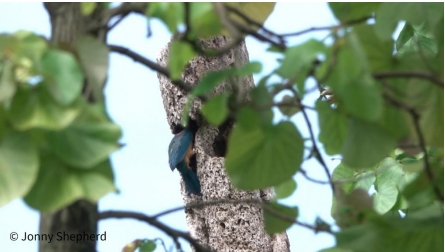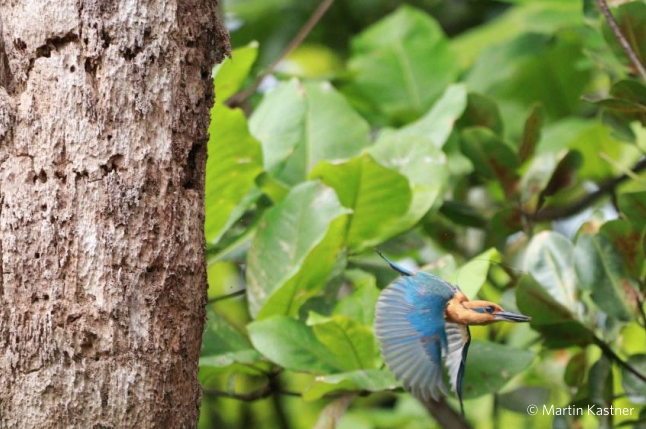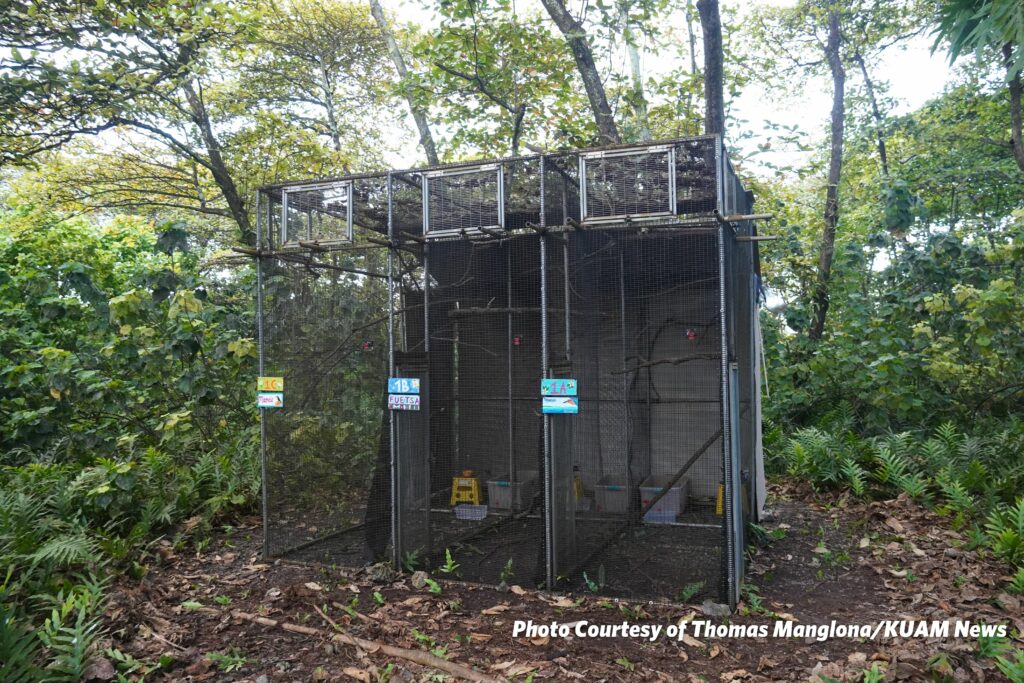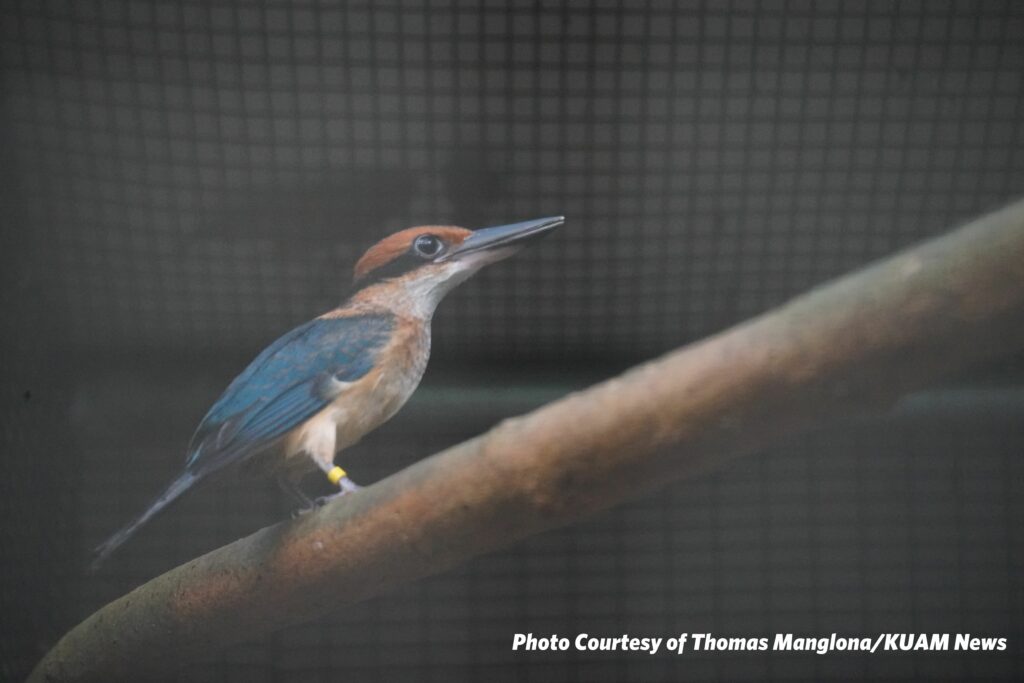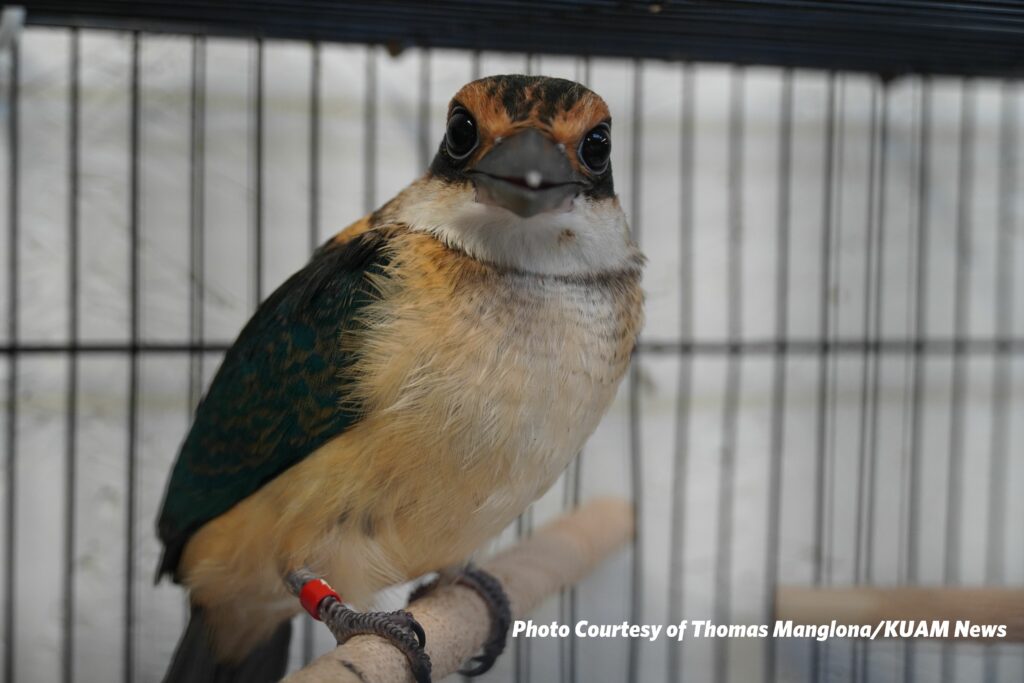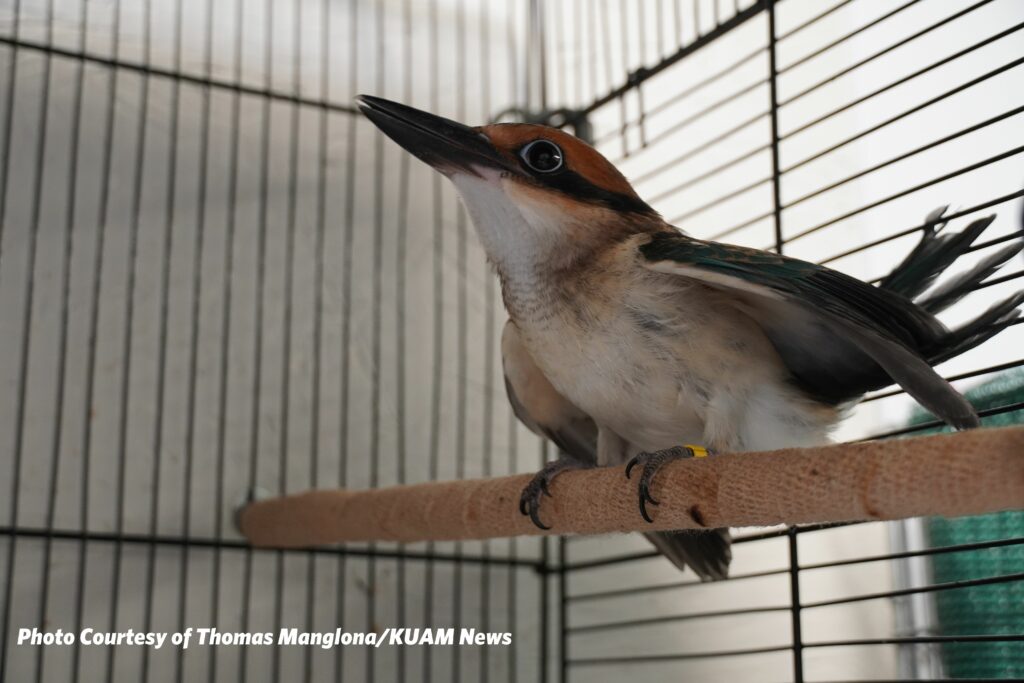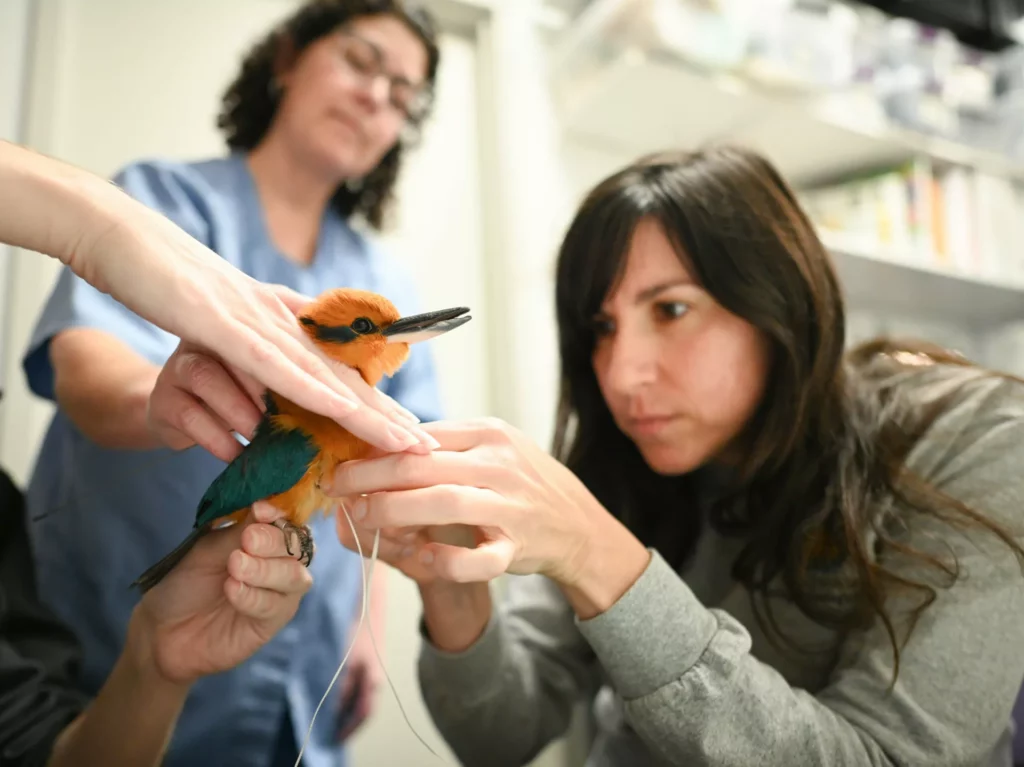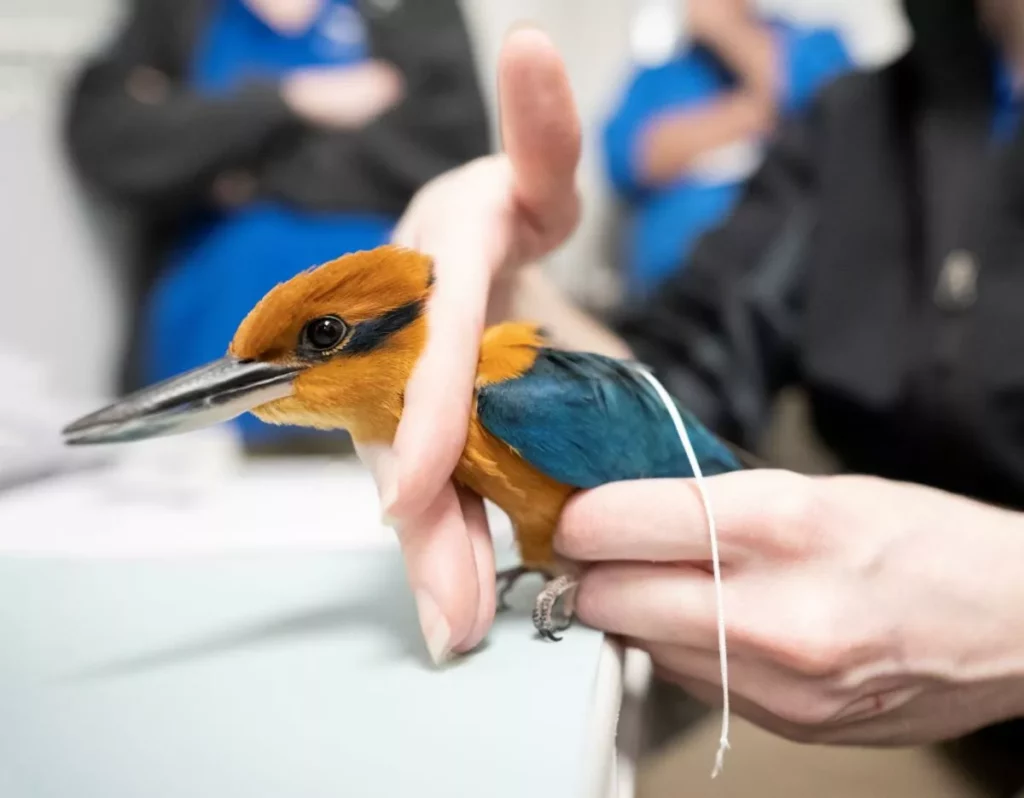Saving Guam Kingfishers
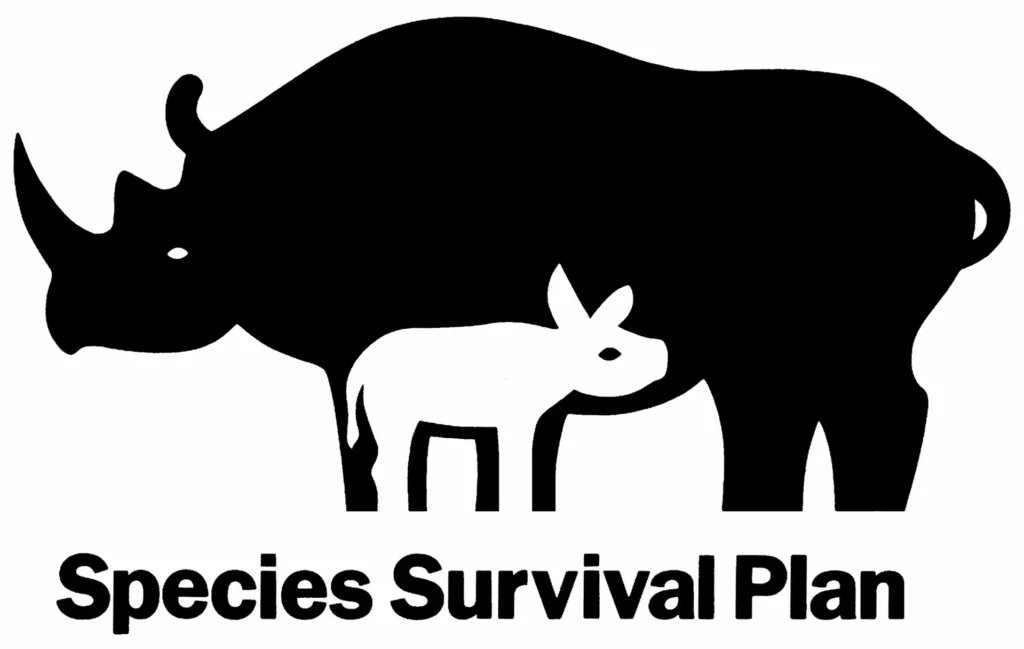
Your Support in Action!
The National Aviary continues to make great strides in protecting these tiny, cinnamon-hued birds. Our very own Senior Aviculturist, Brianna Crane, will play a key role in Sihek Recovery Program efforts for 2025. She will travel to Sedgwick County Zoo in Kansas to help rear potential Guam Kingfisher chicks in the Sihek Translocation Biosecurity Facility… and who knows, the chicks she rears just might be the next to fly in the wild!

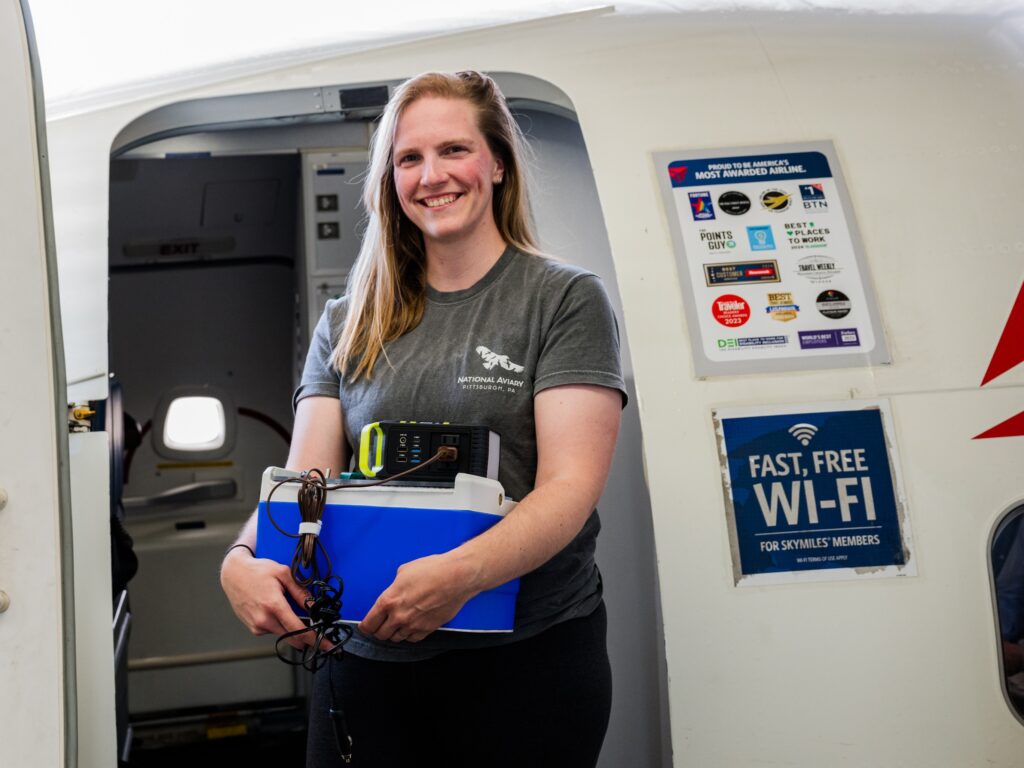
Updates from the Field!
The National Aviary is thrilled to share 2025’s first exciting update on the Guam Kingfisher story that stole international headlines last year. Our partners on the ground in Palmyra Atoll have shared reports of laid eggs, marking the first time the species has bred in the wild since their extinction from their native island of Guam in the 1980s.
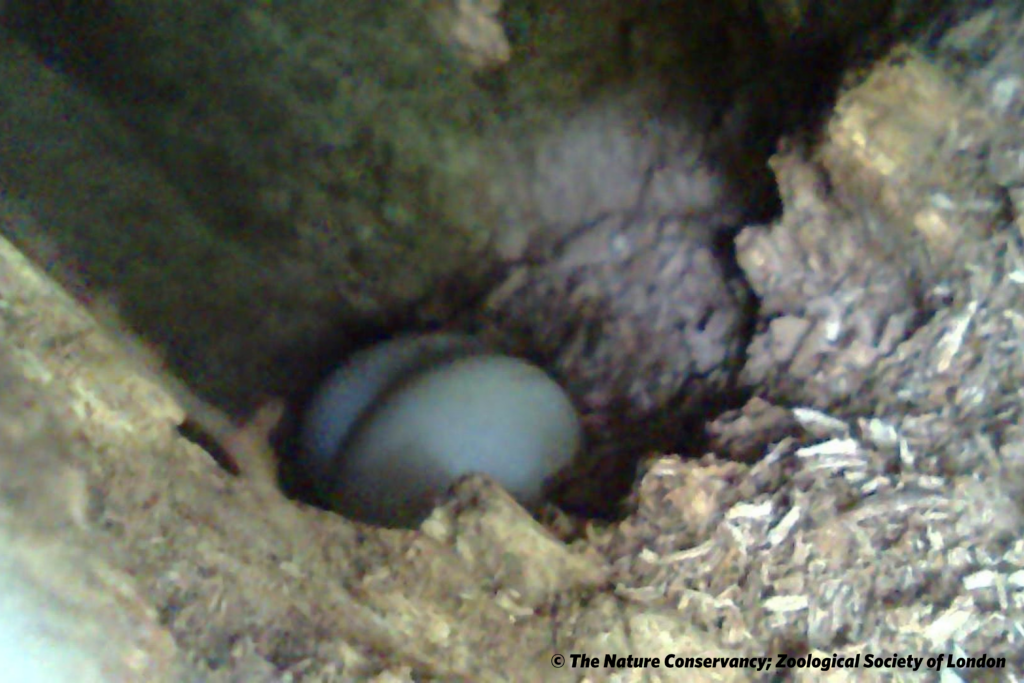
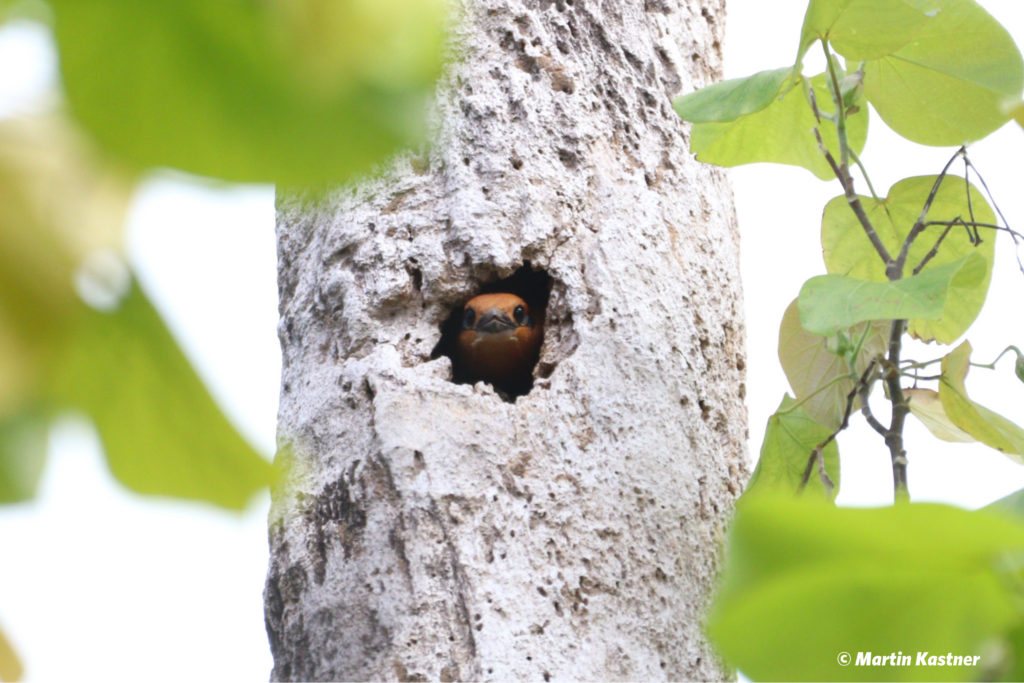
© Martin Kastner
The celebratory arrival of these eggs marks how the birds have flourished since the Sihek Recovery Program’s arrival at The Nature Conservancy’s (TNC’s) Palmyra Preserve in the Pacific Ocean, located about 1,000 miles south of Honolulu, Hawaii.
“Getting to see birds that I helped to hatch and raise be thriving in the wild is so extraordinary,” says Brianna Crane, National Aviary Senior Aviculturist. “Someday soon, these mighty little birds may end up growing the first truly wild population of sihek in 40 years.”
“We’re delighted that all nine of the birds are not only surviving on Palmyra Atoll, they’re already starting the next stage of their journey as we work to reestablish a thriving sihek population in the wild,” says Dr. Caitlin Andrews, Bird Conservation Scientist with TNC and ZSL (Zoological Society of London). “It’s taken years of planning to get to this point, and it’s wonderful seeing their instincts kick in as they’ve been catching geckos and spiders and excavating nests. Their strength provides hope that they will one day be back on Guam.”
With the mated pairs less than a year old and experiencing their first time incubating and caring for eggs on their own, it’s likely it will take a few more rounds of egg-laying for the birds to hone their skills and for chicks to hatch. Nonetheless, these eggs demonstrate both the tremendous resilience of these remarkable birds and the power of conservation to create a second chance for species on the brink of extinction.
In February 2025, members of the Sihek Recovery Program reported seeing excavation (learn more about this nesting process here!) behaviors from Mames and Långet, as well as bonding behaviors between Sindålu and another female. All three sihek hatched at the National Aviary in 2024!
2024 Release Into the Wild!
It’s official: a small population of Guam Kingfishers now live in the wild for the FIRST time since 1988! Three of the sihek, one female (Långet) and two males (Sindålu and Mames) hatched at the National Aviary! Prior to their September 2024 release from temporary aviaries on Palmyra Atoll, each bird received a physical exam to ensure they were ready to be on their own in the wild. All of the sihek received unique leg bands and temporary radio transmitter tags so that they can be monitored over the next several weeks.
FUN FACT: Mames was the first bird to be released AND the radio transmitter technology was actually piloted here at the National Aviary (learn more about that study here)! Talk about a full-circle moment!
Growing a population in the wild (with continued population support from the National Aviary and other zoological institutions), and eventually seeing the Guam Kingfisher’s International Union for Conservation in Nature (IUCN) status downgraded from “Extinct in the Wild” to “Critically Endangered” – which could make them only the third bird species ever to do so, behind the California Condor and the Guam Rail.
Help Us Today
Journey to Palmyra Atoll!
The four females and five males traveled 4,600 miles from Kansas to their new home on Palmyra Atoll, where they spent a few weeks acclimating in temporary aviaries built near their new forest home. Their care team monitored them until they were ready for that next big step: release, the first wild population of Guam Kingfishers in almost 40 years. An achievement made possible through the support of the Association of Zoos and Aquariums, more than two dozen zoological organizations, and the caring visitors, members, and donors who support them. People like you.
See Exciting Update!The Guam Kingfisher’s Story
Guam Kingfishers, known locally as sihek, have been Extinct in the Wild for four decades. As one of just 11 land birds native to Guam, sihek are culturally significant to the island’s history and those who call it home. Unfortunately, they were decimated to the brink of total extinction in Guam by the arrival of an invasive species, the Brown Tree Snake. Had it not been for biologists rescuing 29 of the remaining wild population in the late 1980s and bringing them into expert care, Guam Kingfishers might have been officially declared Extinct.
Since this incredible rescue, Guam Kingfisher populations under the expert care of an Association of Zoos and Aquarium’s (AZA) Species Survival Plan® (SSP), have grown considerably, all while maintaining genetic diversity. The National Aviary has been part of this program, actively working within the SSP® and the Sihek Recovery Program, to eventually introduce the species to Palmyra Atoll, a Brown Tree Snake-free island located about 6,000 km (3,729 miles) from Guam, on a trial basis.
Sihek Recovery Program
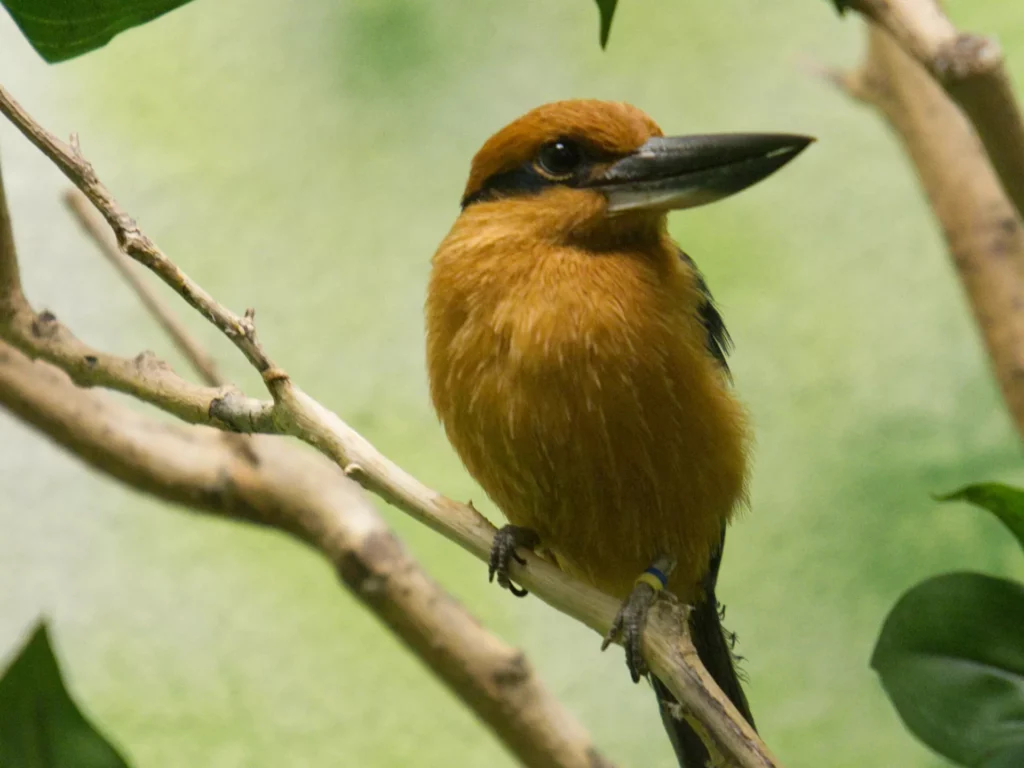
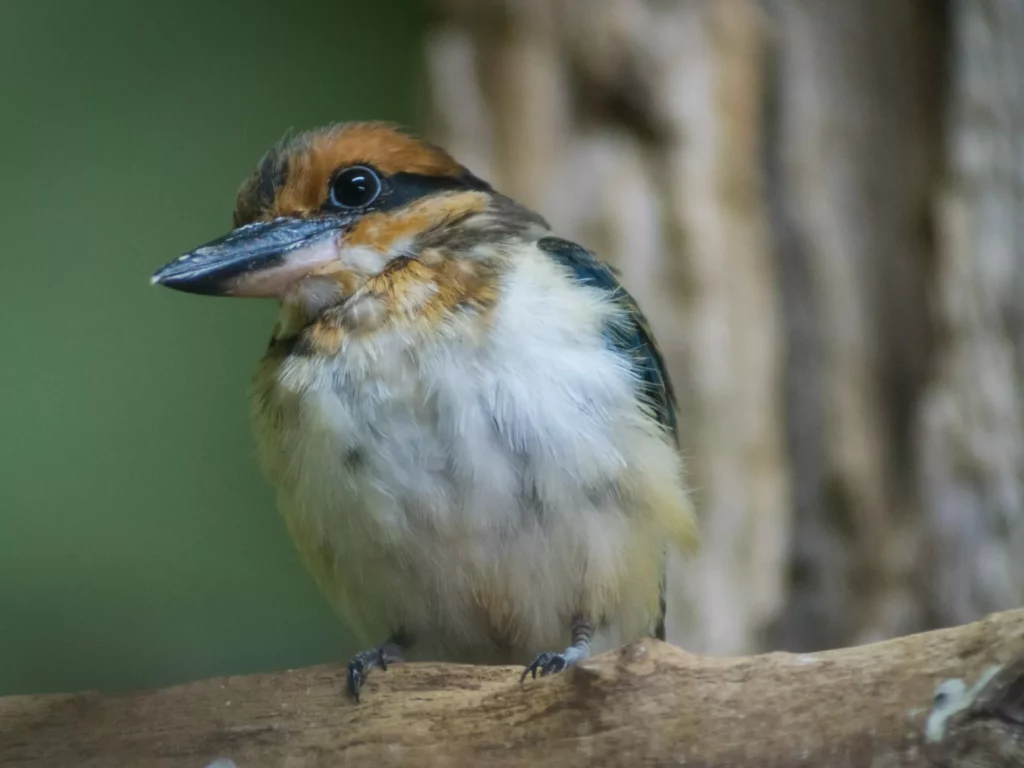
This project, comprised of 25 facilities around the continental United States and Guam, including the Association of Zoos and Aquarium (AZA)-accredited National Aviary, has had this long-term goal (now realized) of releasing sihek into the wild. Over the last decade, the Aviary has hatched more than 20 Guam Kingfisher chicks in our behind-the-scenes, Breeding Center, and sent more than a dozen to other facilities as part of the Species Survival Program®.
National Aviary Senior Aviculturist Brianna Crane plays a crucial role in this process. In addition to incubating fertile eggs in our Breeding Center that hatched and joined the program this year, Brianna has personally transported fertile Cincinnati Zoo Guam Kingfisher eggs and chicks that hatched at the Aviary to the Sihek Translocation Biosecurity Facility at the Sedgwick County Zoo in Kansas. Every hatching is critical. The process of introducing a species back into the wild is extremely intricate and complex, especially with the challenges of a species on the brink of extinction.
A 2024 Timeline of Hatchings
Nesting
Currently, there are currently fewer than 150 Guam Kingfishers remaining in the world, all under expert care. National Aviary visitors can witness a pair of these magnificent birds, who are part of this program, in our public-facing habitat, Canary’s Call Presented by Dollar Bank.
Similar to woodpeckers, Guam Kingfishers are cavity nesters. The Aviary replicates this natural nesting behavior by providing nest boxes filled with materials, such as wood chips and leaves. The nest boxes are then sealed with cork, allowing our Guam Kingfishers to mimic the nest-building process they would perform in the wild.
Egg Laying
In early April 2024, two eggs were extracted from a specially designed nest box (similar to the one seen above) by National Aviary Senior Aviculturist, Brianna Crane. The eggs were laid in a nest box in our public-facing habitat, Canary’s Call Presented by Dollar Bank. They were then carefully transferred to our Breeding Center for incubation. Further genetic testing revealed that one of the eggs was viable! The egg was then monitored in our breeding center until its journey to the Sedgwick County Zoo in Kansas, as part of the Sihek Recovery Program. Despite best efforts, one of the fertile National Aviary Guam Kingfisher eggs did not have a successful hatch in the Sihek Translocation Biosecurity Facility at the Sedgwick County Zoo.
Hatchings
Sindålu: A Little Warrior
In May 2024, the Cincinnati Zoo brought another fertile egg to the National Aviary’s Breeding Center to be in egg-hatching quarantine. The special little chick began to pip, and after 36 hours with the help of our dedicated staff, the chick finally made its arrival, and a DNA test determined it to be a BOY! Our staff was given the honor of choosing his name from a list submitted by people living in the Marianas Islands: Sindålu (sin-duh-loo), meaning warrior.
A few weeks after hatching, Senior Aviculturist, Brianna Crane made another trip to the Sedgwick County Zoo with Sindålu. Did you know even Extinct in the Wild chicks need to go through TSA to fly?

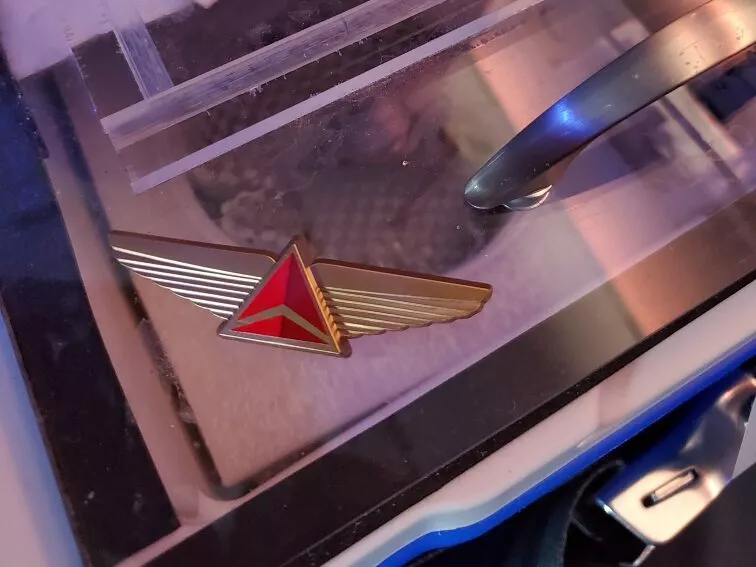
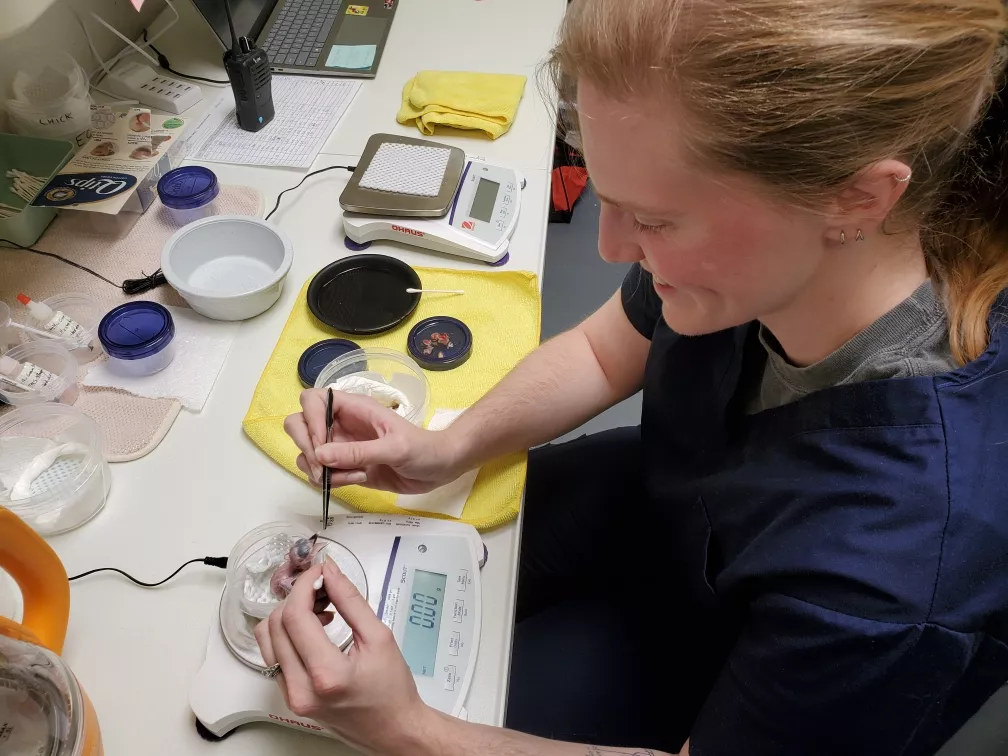
The newest Guam Kingfisher chick to join the Sihek Recovery Program earned his first frequent flier miles on that trip, thanks to a collaboration between two AZA-accredited zoos and Delta Air Lines. Pittsburgh International Airport’s TSA agents were extra careful with Sindålu’s incubator. He was securely fastened in his Delta Airlines seat. The entire flight crew was delighted to be part of this important conservation story. Sindålu has yet to fledge, but he took his first flight with the help of an expansive and excited team, even receiving a personalized set of pilot wings to commemorate the occasion.
Meet Långet and Mames
Fasten your seatbelts and get ready for takeoff: TWO more Guam Kingfisher chicks, known locally as sihek, then hatched in the National Aviary’s Breeding Center in June.
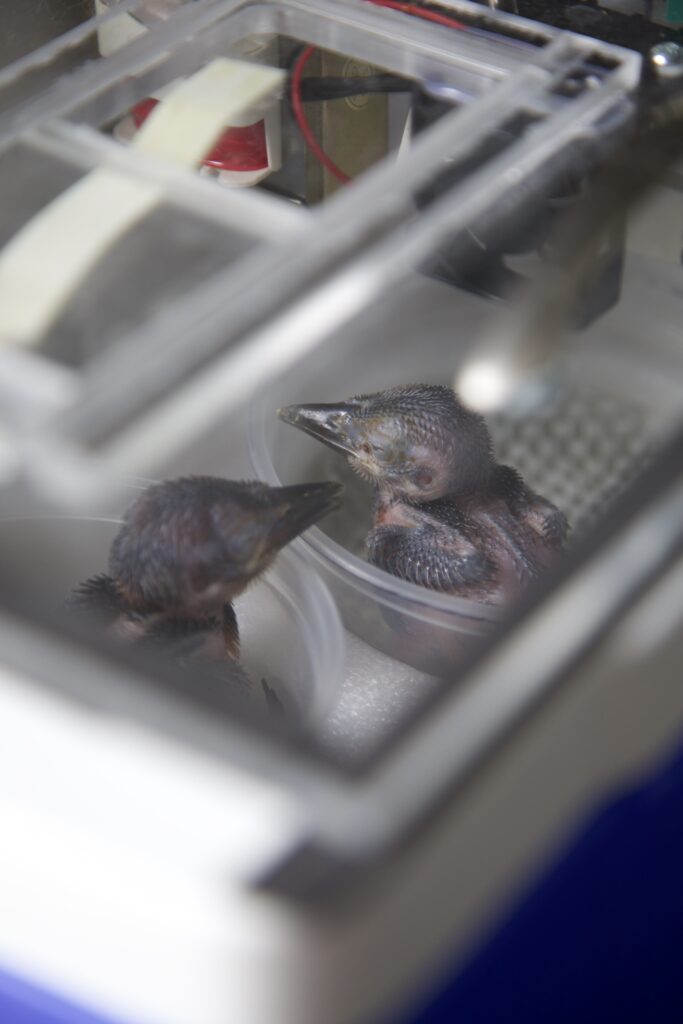
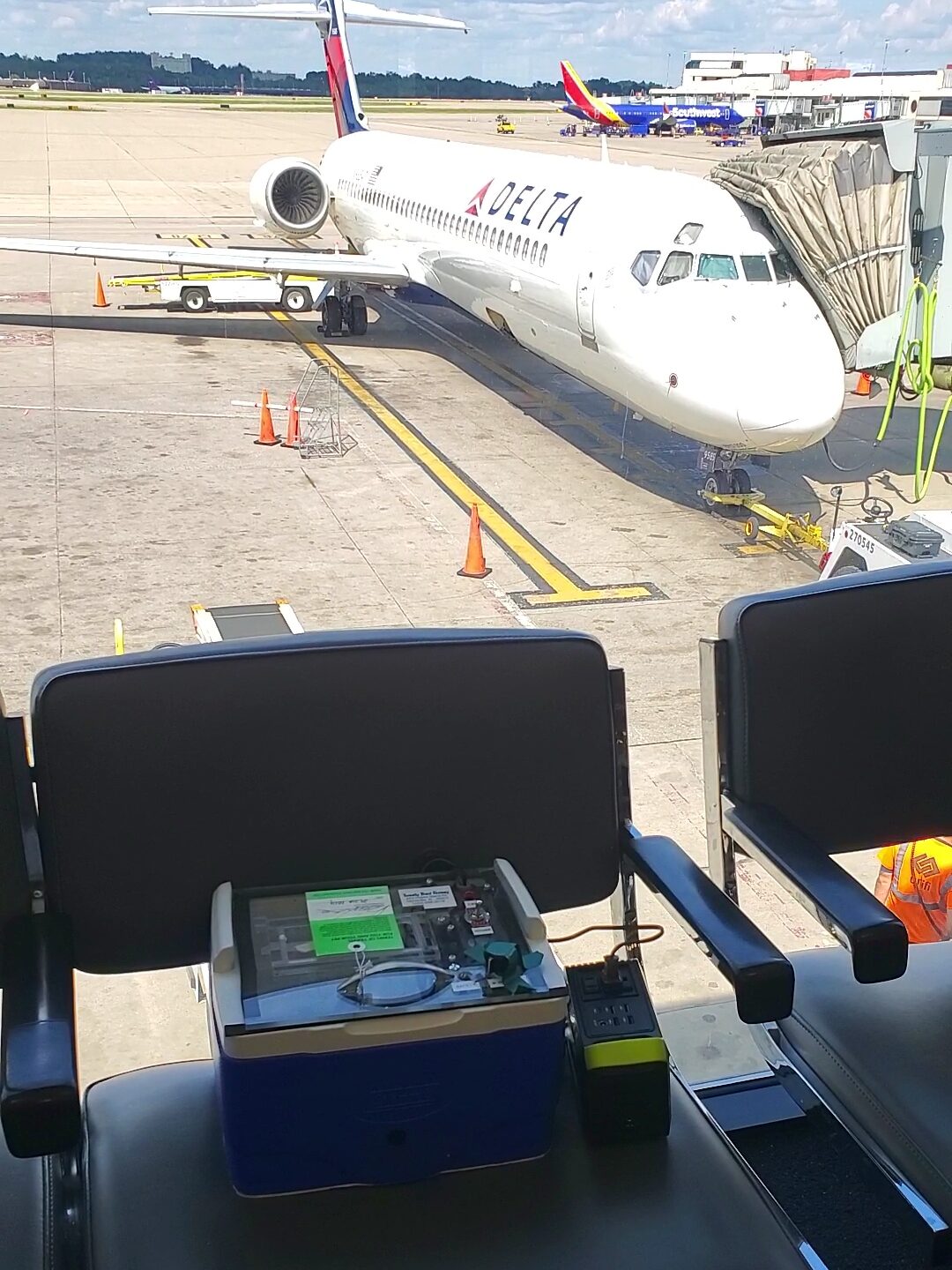
At the end of June, National Aviary Senior Aviculturist Brianna Crane once again “carried on” the duo (plus their incubator) onto a Delta Air Lines flight, with an ultimate destination, once again, of the Sedgwick County Zoo in Wichita, Kansas. Pittsburgh International Airport’s TSA agents were careful with their incubator. Once boarded, Bri securely strapped them into their seat.
Once at Sedgwick, they were given a DNA test to determine their sex. The first chick is a FEMALE named Långet, which means “heaven” or “sky” in CHamoru (the language of the Marianas Islands indigenous people). The second is a MALE named Mames, which means “sweet.”
Watch Their Journey
